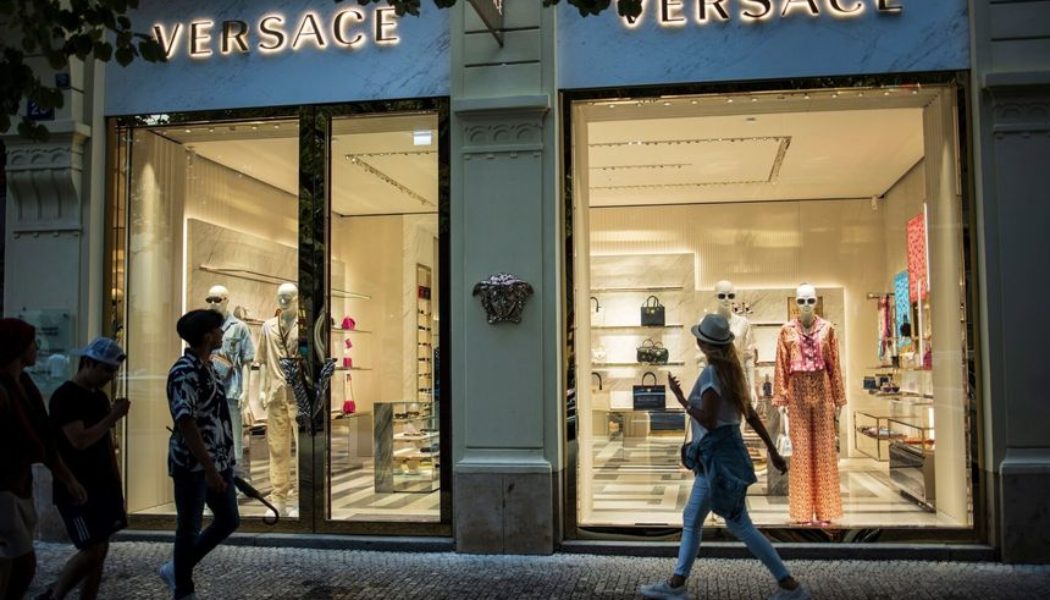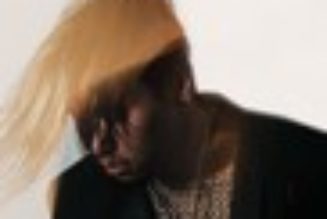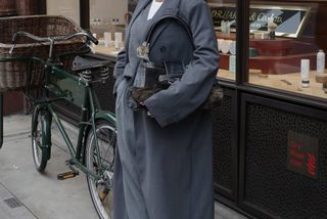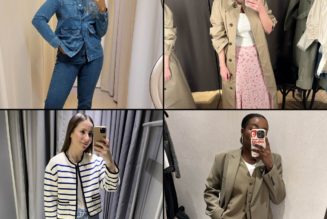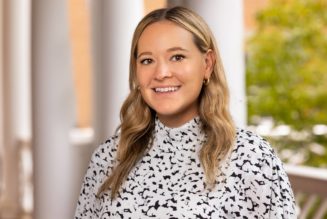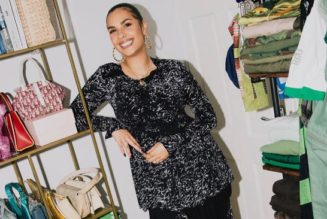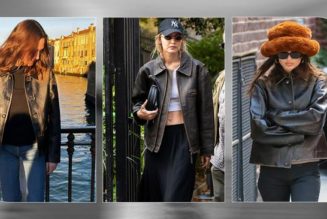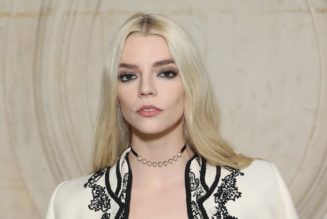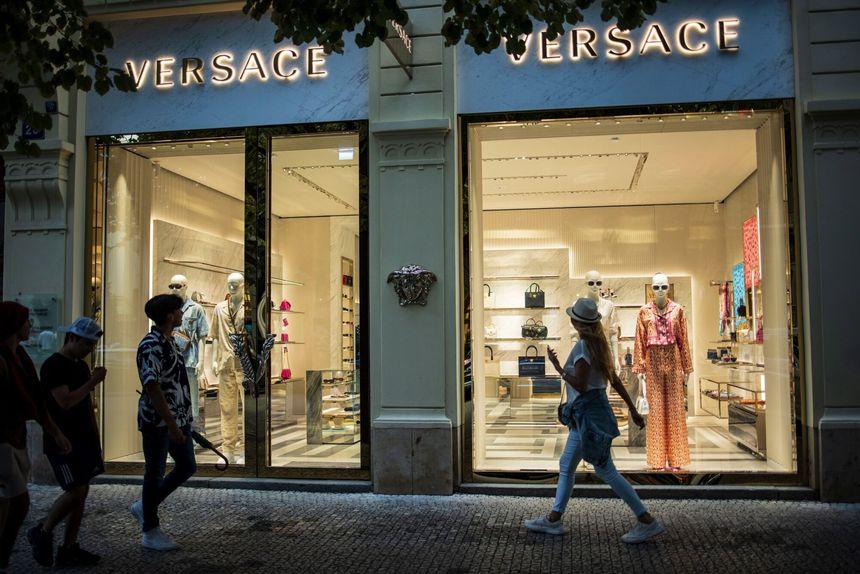
The conglomerate would include brands such as Versace.
Photo: Milan Jaros/Bloomberg News
America has an answer to the deal making among Europe’s fashion houses: A proposed merger of two U.S. rivals that would put Coach, Michael Kors, Kate Spade, Versace and other brands under one roof.
Tapestry’s $8.5 billion acquisition of Capri would create a conglomerate with more than $12 billion in annual sales that would span income levels, from the more budget-conscious, aspirational customers to the upper echelons of British and Italian fashion.
The combined company would still be dwarfed by European rivals and lack the high-wattage labels and diversity that have fueled LVMH’s success. The French luxury-goods giant has annual sales of roughly $90 billion and owns dozens of brands—from Dior to Dom Pérignon—across fashion, leather goods, jewelry, and wine and spirits.
That diversity has helped LVMH post consistently strong financial results, which have fueled its stock price, giving it a market valuation of more than $440 billion and allowing Chief Executive Bernard Arnault to compete with Elon Musk for the title of the world’s richest person.
European Giants
The European conglomerates also benefit from deep management benches and equally deep pockets that they use to nurture and expand their brands. When LVMH acquired Tiffany for about $16 billion in 2021, it invested heavily to revamp the jeweler’s marketing, including by hiring Beyoncé and Jay-Z as brand ambassadors.
The size advantage was recently on display when Louis Vuitton mounted a menswear show on the historic Pont Neuf bridge in Paris. Guests were ferried in on boats to a gilded runway. Pharrell Williams, the brand’s new creative director for menswear, rapped alongside Jay-Z. The show quickly garnered more than one billion views on social media, according to the company.
Tapestry and Capri have gone toe-to-toe in recent years snapping up brands in an effort to create conglomerates of their own. But they have been hard pressed to keep up with the deal making.
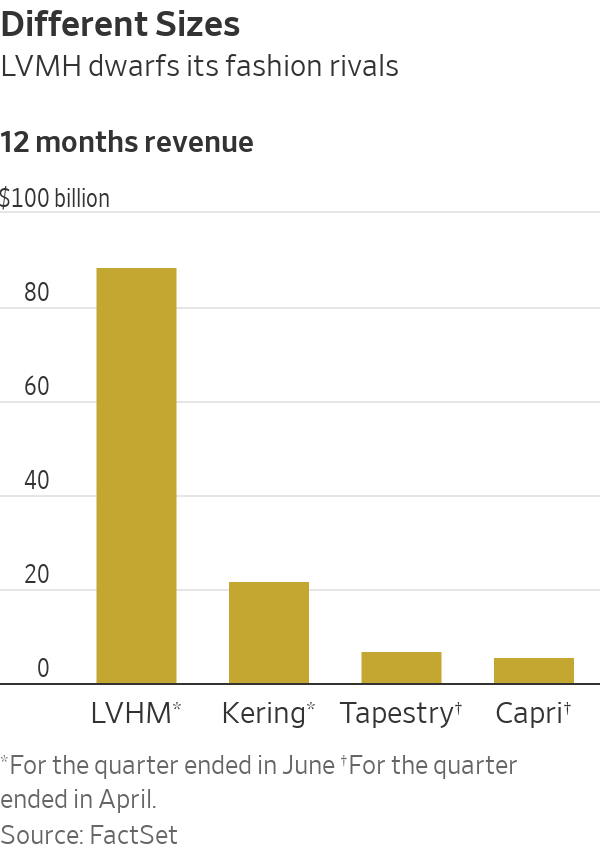
Gucci owner Kering last month said it was buying a stake in Valentino, adding the Italian luxury label to a portfolio that also includes Balenciaga and Saint Laurent. Kering recently appointed a new designer at Gucci and shuffled its executive ranks to revitalize its largest brand, which has fallen out of favor.
Tapestry and Capri are betting they will be stronger together than apart. Capri shares surged 56% on the news, which promises a big cash premium from where the stock had recently slumped. Tapestry shares, which had climbed more than 23% over the past 12 months, fell 16% on Thursday. It will take on debt to finance the acquisition.
CEO’s Strategy
The task of making the marriage work largely falls to Joanne Crevoiserat, who took over the top Tapestry job in 2020 when her predecessor resigned amid a board probe into his personal behavior. Previously, she was Tapestry’s finance chief and an executive at teen retailer Abercrombie & Fitch and at department store chains. Capri Chief Executive John Idol has agreed to stay through the transaction’s close sometime next year, Crevoiserat said in an interview.
She said the deal combines two complementary companies that can learn from each other to grow their brands. Tapestry has a strong expertise in leather goods as well as in operating its own stores and digital business. It also has a large presence in Asia. Capri has expertise in shoes and clothing and is bigger in Europe.
Crevoiserat said the acquisition isn’t aimed at creating an American version of a European luxury house. “We are not trying to be something else,” she said. Rather, it is rooted in applying data and analytics to iconic brands to develop them, a strategy that has worked well at Tapestry, she said.
Tapestry uses data to manage its inventory, develop products and market to consumers. Crevoiserat said those skills have helped it transform its business over the past three years and can be used to enhance the brands it is buying. “We consider that a competitive advantage,” she said.
The deal will allow Tapestry to attract the best talent and provide a stronger foothold in the true luxury sphere by placing Capri’s Versace and Jimmy Choo labels under its umbrella, she said. Items at those brands can sell for thousands of dollars rather than hundreds of dollars at Coach, Kors, Kate Space and Stuart Weitzman.
But it comes as demand for luxury goods is slowing, particularly in North America. Crevoiserat said she is taking the long-term view of the luxury sector, which tends to rise over time. The diversification of products and geographies should help insulate the company from economic shocks, according to Scott Roe, Tapestry’s finance chief.
The company expects more than $200 million in annual savings within three years of the deal closing by eliminating duplicate corporate costs and wringing efficiencies from its supply chain, Roe said.
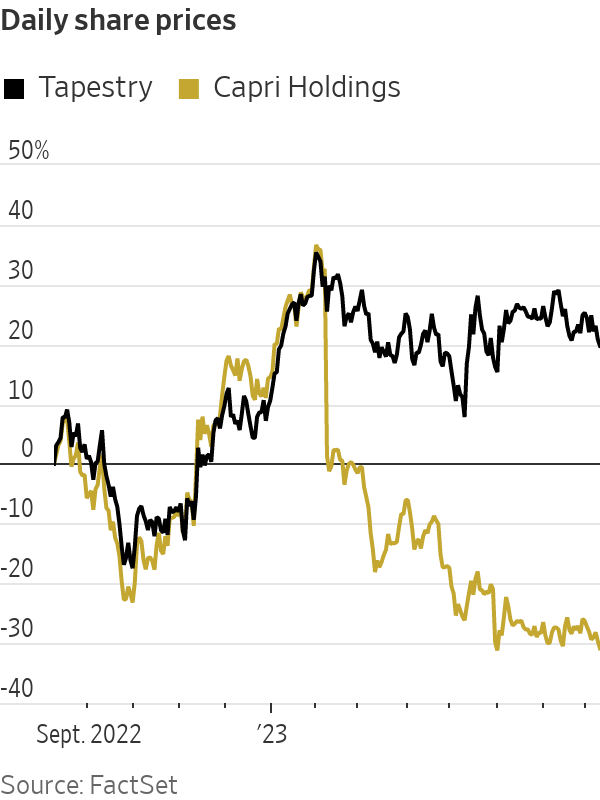
Saturation Struggles
The U.S. companies started as single brands. Tapestry was called Coach until it changed its name in 2017 to reflect the acquisitions of Kate Spade and Stuart Weitzman. Capri, formerly Michael Kors, followed suit in 2018, after it bought Jimmy Choo and Versace.
Both companies have struggled at times with oversaturation and discounting of their Coach and Michael Kors brands. Tapestry has done a better job of revitalizing and protecting the cachet of the Coach brand, and analysts are hopeful it can bring that discipline to Kors.
Their acquisitions haven’t all gone smoothly. Kate Spade initially struggled, although it is in the process of a turnaround. And Versace, which initially recorded stellar growth, has stumbled in recent quarters.
After the market closed on Thursday, Capri said net income in the most recent quarter fell 76% to $48 million. Total revenue slid 9.6%, driven by declines at its Kors and Versace brands. Tapestry is slated to report results next week.
—Nick Kostov contributed to this article.
Write to Suzanne Kapner at suzanne.kapner@wsj.com
Corrections & Amplifications
Pharrell Williams is Gucci’s creative director. An earlier version of this article misspelled his first name as Pharell. (Corrected on Aug. 10)
